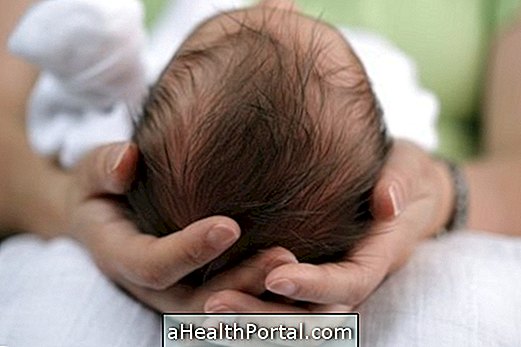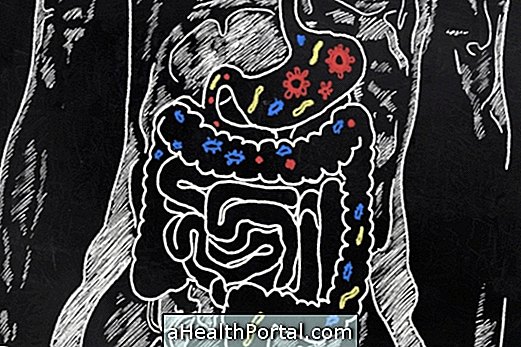Women who think they may be pregnant but who have experienced vaginal bleeding may find it very difficult to identify whether this bleeding is only a delayed menstrual period or whether it is in fact a miscarriage, especially if it occurred within 4 weeks after the probable date of menstruation.
So the best way to know is to take a pharmacy pregnancy test as soon as menstruation delays. That way, if you are positive and the woman has bleeding in the weeks that follow, it is more likely that a miscarriage has occurred. However, if the test is negative, bleeding should be only a delayed menstruation. Here's how to take the pregnancy test correctly.

Differences between abortion and menstruation
Some differences that may help a woman to identify if she had a miscarriage or delayed menstruation include:
| Delayed menstruation | Spontaneous abortion | |
| Color | Bleeding slightly reddish brown, similar to previous menses. | Bleeding slightly brown, which passes to pink or bright red. It may still smell foul. |
| Amount | May be absorbed by absorbent or buffer. | Difficult to contain in the absorbent, soiling the panties and the clothes. |
| Presence of blood clots | Small clots may appear on the absorbent. | Release of larger clots and gray tissue. In some cases it may be possible to identify the amniotic sac. |
| Pain and cramps | Pain and tolerable cramps in the region of the abdomen, thighs and back, which improve with menstruation. | Very severe pain that comes on suddenly, followed by heavy bleeding. |
| Fever | It is a rare symptom of menstruation. | It can arise in several cases of abortion due to inflammation of the uterus. |
However, menstrual signs vary greatly from one woman to the next, with some women experiencing little pain during the period, while others experience severe cramps and bleeding heavily, making it more difficult to identify whether it is menstruation or abortion.
Thus, it is recommended to consult the gynecologist whenever a menstruation with characteristics different from the previous ones appears, especially when it is suspected to be abortion. Understand that other signs may indicate an abortion.
Exams that help identify the cause
Although the pharmacy pregnancy test may in some cases help to identify a miscarriage or delayed menstruation, the only way to confirm the diagnosis is to consult your gynecologist for a beta-HCG test or a transvaginal ultrasound.
- Quantitative beta-HCG test
The beta-HCG test needs to be done on at least two different days to assess if the blood-sugar levels are declining. If this happens, it is a sign that the woman has had an abortion.
However, if the values increase, it means that she may still be pregnant and that the bleeding was only caused by the embryo implanting in the uterus or for another cause, and it is recommended to perform a transvaginal ultrasound.
If the values remain less than 5mIU / ml, it is probable that pregnancy has not existed and, therefore, the bleeding is only a delayed menstruation.
- Transvaginal ultrasound
This type of ultrasound allows an image of the inside of the uterus and other reproductive structures of the woman, such as the fallopian tubes and ovaries. Thus, with this examination it is possible to identify if there is any embryo developing in the uterus, in addition to evaluating other problems that may have caused bleeding, such as ectopic pregnancy.
In some rare cases, ultrasound may indicate that the woman has no embryo or any other change in the uterus, even when the beta-HCG values are altered. In these cases, the woman may be pregnant and it is therefore advisable to repeat the examination about 2 weeks later to assess whether the embryo can already be identified.
What to do in case of suspected abortion
In most cases, abortion occurs in the first weeks of gestation and therefore bleeding lasts only 2 or 3 days and symptoms improve during this time, so it is not necessary to go to the gynecologist.
However, when the pain is very severe or the bleeding is very intense, causing fatigue and dizziness, for example, it is advised to go to the gynecologist or hospital immediately to initiate appropriate treatment, which may include only the use of medicines to relieve pain or a minor emergency surgery to stop the bleeding.
In addition, when a woman thinks she has had more than 2 miscarriages it is important to consult her gynecologist to see if there is any problem, such as endometriosis, which is causing the abortions and needs to be treated.
Here are the top causes that can cause infertility in women and how to treat them.
























